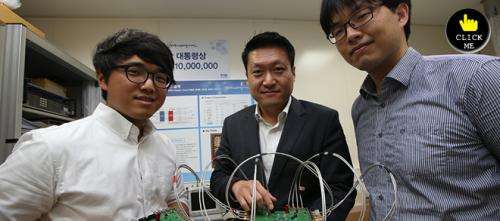Ultra-low power 100 gbps ethernet IC developed

Each day, billions of people surf the Internet for information, entertainment, and education. The Internet contains an immeasurable amount of information and knowledge generated every minute all around the world, which is readily available to everyone at the quick click of a computer mouse. The real magic of the Internet, however, lies in data centers where hundreds of billions of data are stored and distributed to a designated user around the clock.
Today, almost every business or organization has its own data centers or outsources data center services to a third party. The centers house highly specialized equipment responsible for the support of computers, networks, data storage, and business security. Accordingly, the operational cost of data centers is tremendous because they consume a great amount of electricity.
Data centers can consume up to 100 times more energy than a standard office building. The data center energy consumption growth doubled from 2000 to 2006, reaching more than 60 billion kilowatt hours per year. Experts predict that this number could double again by 2011. If the current usage and technology trends continue, for example, the energy consumption of data centers in the US will reach 8% of the country's total electric power consumption by 2020.
A research team at the Korea Advanced Institute of Science and Technology (KAIST) and Terasquare, Inc., the university's spin-off company, developed an extremely low-powered integrated circuit (IC) for the Ethernet that consumes less electricity than 0.75W but is able to send and receive data at the high speed of 100 Gigabits per second (Gbps). The research team headed by Hyeon-Min Bae, assistant professor of electrical engineering at KAIST, said that with the new microchip, they can reduce the electric power consumption of data centers by one third of their current energy usage.
The ultra-low power circuit, 100-gigabits full-transceiver CDR, is the world's first solution that can be loaded to the smallest communication module (CFP4/QSFP28), the next generation chip for data centers. Compared with other chip producers, the 100 Gbps CDR is a greener version of the technology that improves the energy efficiency of data centers while maintaining the high speed of data transmission.
Professor Hyeon-Min Bae said, "Our chips are advanced two years ahead of those of competitors. We plan to manufacture the product from 2014 and expect that it will lead the 100 Gbps Ethernet IC market, which is worth of USD 9 billion."
The commercial model of the IC was first introduced at the 39th European Conference and Exhibition on Optical Communication (ECOC), the largest optical communication forum for new results and developments in Europe, which was held from September 22-26 at ExCeL London, the international exhibition and convention center.
Professor Bae added, "We received positive responses to our ultra-low power 100 Gbps Ethernet IC at the ECOC. The chip will be used not only for a particular industry but also for many of next generation, super high speed information communications technology, such as high speed USB, high definition multimedia interface (HDMI), and TV interface."



















